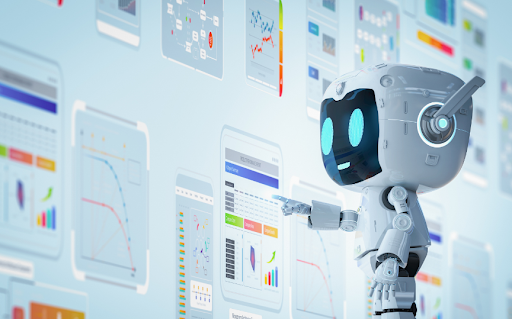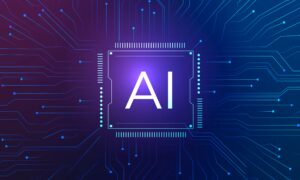For enterprise leaders navigating complex workflows, budget constraints, and relentless market demands, one thing has become clear: the future of operations won’t be scaled through hiring sprees or bloated tech stacks. It will be streamlined through digital labor.
This shift isn’t theoretical. It’s already happening across global organizations as operational leaders turn to AI-powered systems that work like employees, only faster, more consistent, and available 24/7. Digital labor is no longer a side strategy. It’s becoming a core function of enterprise success.
What Is Digital Labor and How Has It Evolved?
Digital labor refers to intelligent systems that perform tasks traditionally carried out by human employees. Think of it as a virtual workforce built to manage high-volume, data-heavy, or repetitive work. What sets today’s digital labor apart from traditional automation, like RPA, is its capacity to reason, adapt, and integrate across business functions.
In the past, digital labor meant robotic process automation (RPA) handling repetitive clicks or simple form-filling. While helpful, it was rigid and narrow. Today’s systems are smarter. If Digital Workers are custom built, they can utilize causal reasoning, flexibly adapt to use cases like invoice categorization, data cleaning, and on-demand reporting, and perform complex tasks like root cause analysis, demand forecasting, and real-time compliance checks at scale.
One leading company building intelligent systems for enterprise-grade digital labor is causaLens, which specializes in creating custom Digital Workers that automate both operational and analytical processes. Their solutions are engineered not just to follow instructions, but to understand processes deeply and optimize them intelligently.
Why Enterprises Are Turning to Digital Labor
Executives across operations, data, and technology teams are rethinking traditional workflows. Hiring more analysts, outsourcing repetitive work, or stacking more SaaS platforms no longer offers sustainable scale. Digital labor solves this by providing:
- Scalability without overhead
- Accuracy without manual reviews
- Speed without process fatigue
- Adaptability in constantly shifting environments
In enterprise settings, digital labor fills in the gaps where people struggle to keep pace, especially in functions where data moves faster than human teams can analyze.
Strategic Use Cases for Digital Labor
While digital labor is often associated with back-office automation, its impact now reaches mission-critical areas of the business. Examples include:
- Supply chain optimization: Automating demand forecasting, logistics coordination, and real-time vendor tracking
- Operational reporting: Generating, formatting, and distributing reports based on live data feeds
- Compliance monitoring: Continuously scanning for regulatory breaches or risk signals
- Financial planning: Assisting in budgeting, scenario modeling, and ROI analysis
- Go To Market operations: Campaign effectiveness, pricing and promotions, and marketing operations automation
These aren’t one-size-fits-all workflows. They’re customized, and they require systems that can handle real-world exceptions, not just rule-based automation. This is where intelligent digital labor stands out.
When Is the Right Time to Invest in Digital Labor?
The signs that your organization is ready for digital labor may already be showing. Common signals include:
- Staff spending too much time on data prep or reporting
- Bottlenecks between departments caused by manual handoffs
- Inconsistent compliance results or audit findings
- Pressure to reduce operational headcount without lowering performance
- Unused or underutilized data sitting in silos
In each of these scenarios, digital labor doesn’t just lighten the workload. It helps companies redesign processes from the ground up for long-term agility.
CausaLens: Powering Intelligent Digital Labor
Organizations seeking enterprise-ready digital labor solutions are turning to causaLens. Unlike general AI and agent-building platforms, causaLens builds custom Digital Workers unique to their customers use cases that operate within a company’s real-world context, automating data cleaning, forecasting, analytics, and operational processes with precision.
What makes causaLens different is its proprietary causal AI engine, developed over a decade and supported by $45 million in Series A funding. This technology allows Digital Workers to not only automate, but also diagnose and improve the processes they’re involved in. They’re already transforming workflows for companies like Mitsubishi Electric, Johnson & Johnson, and McCann Worldgroup.
Rather than stitching together automation tools and hoping they scale, causaLens partners with enterprises to create reliable, flexible systems that deliver results fast, often within weeks.
The Cultural Shift Around Digital Labor
Digital labor also plays a role in reshaping company culture. Rather than threatening jobs, these systems are freeing up skilled professionals to focus on strategic and creative work. When manual, repetitive tasks are handled by machines, humans can spend more time leading initiatives, innovating, and solving big-picture problems.
At the executive level, this translates to better decision-making and faster implementation of new strategies. It enables companies to stay nimble, especially during economic pressure or periods of rapid growth.
Final Thoughts: Redefining What Work Looks Like
Digital labor is not just a technology upgrade. It’s a redefinition of how modern enterprises operate. By turning manual workflows into intelligent systems, businesses can improve efficiency, scale without hiring sprees, and adapt with greater precision.
If you’re looking to reduce operational friction, increase forecasting accuracy, or remove inefficiencies in your workflows, causaLens offers the digital labor foundation to make it happen. Their approach isn’t just about automation, it’s about elevating enterprise performance for the long haul.































